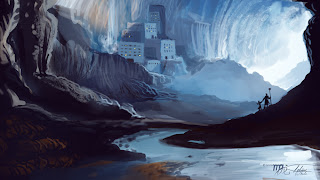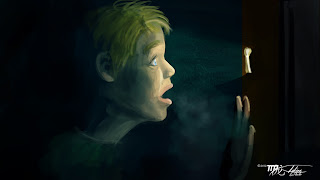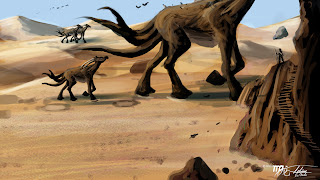Continued from Speed-painting-techniques-act-1
As from the previous speed painting post I said that I was a bit rusty, but thanks to the daily speed paint challenges from da-speedpaint on Deviant Art I not only knocked that rust off, but I am now oiling the squeaky wheel!
One of the big mistakes I think I have done was to try and sketch out a speed painting. Sketching is not a bad thing for speed painting, but I have found that I would get caught up in the sketch, which in turn, would eat up time and then I would get trapped by the sketch. If you do feel the need to sketch then keep it loose and keep it fast and keep yourself unconcerned about detail because that is not what speed painting is about.


 Another tip I found to help my speed
painting is not be afraid of using loose references. Go ahead and do a
fast google search for the topic you want to paint. Grab one or two of
them and set them up on your screen next to your blank canvas. If you
have a Poser you can set up quick poses and render them out as
references as well. I found that it also makes it a bit easier to drop
such references into a blank canvas that is the same dimensions as the
one you are working on. By have loose references you free your mind up a
bit so that you can just react and counter-react to how you are
painting. When using references in speed painting it is wise to not and
try and match the color of your reference because odds are you are going
to make changes anyways, so close is good enough.
Another tip I found to help my speed
painting is not be afraid of using loose references. Go ahead and do a
fast google search for the topic you want to paint. Grab one or two of
them and set them up on your screen next to your blank canvas. If you
have a Poser you can set up quick poses and render them out as
references as well. I found that it also makes it a bit easier to drop
such references into a blank canvas that is the same dimensions as the
one you are working on. By have loose references you free your mind up a
bit so that you can just react and counter-react to how you are
painting. When using references in speed painting it is wise to not and
try and match the color of your reference because odds are you are going
to make changes anyways, so close is good enough. Lastly when you start a speed painting, don't be afraid to be a bit sloppy while you block in your shapes. It is best to throw down as much of the color and general shape of what you are painting first. It is kind of like planning out a pallet and composition stage. Once you have everything laid out for positioning and color pallet you can then go to town and refine your painting for the rest of the time you have allotted yourself.
Check out more of my work at Tobias White Illustrations
You should also follow me on Facebook, linkedin, Deviant Art, or catch me on Tweeter at @TobiasWhite1




















































